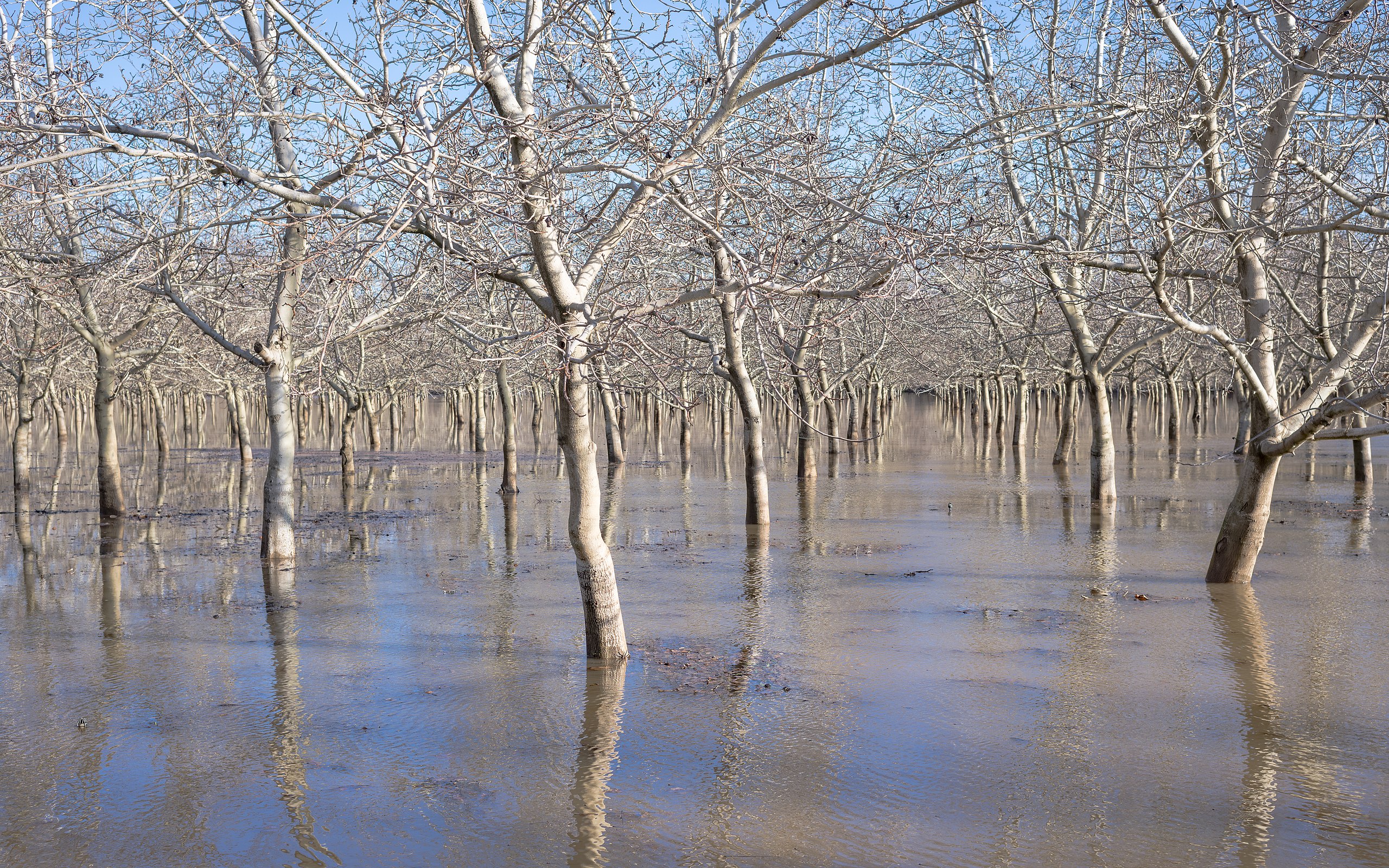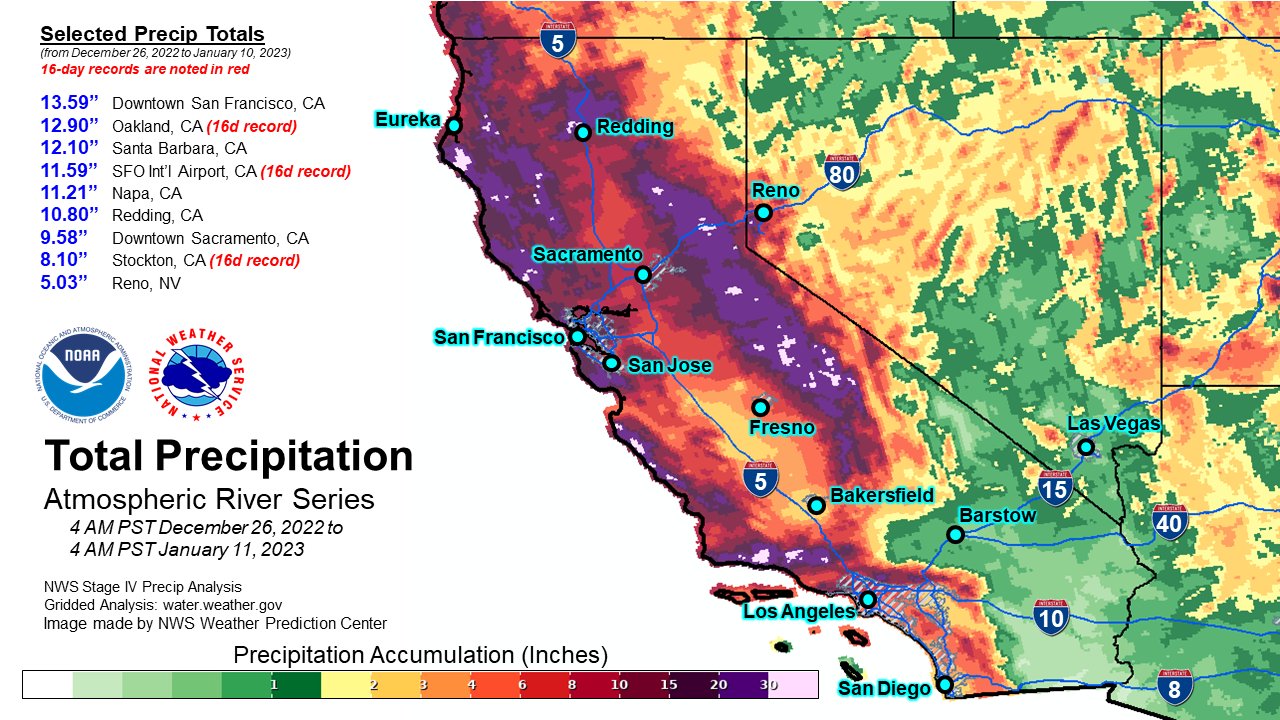
The series of winter storms that have battered California since late December finally began to wind down on January 17, 2023. The historic levels of rain and snow have caused rivers to overflow and flooded roads and homes. Thousands of people were forced to evacuate. Millions lost power at some point during the three-week-long deluge of rain. At least 20 people have died in connection with the storms.

The severe weather inflicted damage to about 40 of California's 58 counties. Capitola, a seaside town in Northern California, was particularly hard hit. Giant ocean swells caused by the high tides destroyed large parts of the harbor and flooded much of the downtown area. In the nearby town of Rio del Mar, massive waves carrying logs and debris destroyed several beachfront homes.
Things were no better in Southern California. The fear of mudslides led to large-scale evacuations in Santa Barbara and Montecito on January 9, 2023. The residents were, however, allowed to return home the following day. In Los Angeles, a sinkhole swallowed two cars on January 17, 2023. Fortunately, all four occupants were safely rescued.
Experts blame the large-scale devastation on a "bomb cyclone" that hit California on January 5, 2023, and the nine consecutive "atmospheric rivers" that followed. A "bomb cyclone" is a large, intense storm that forms when cold and warm air masses collide. The pressure drop creates a gap between the hot and cold air masses, leading to high winds that help fuel the storm.
"Atmospheric rivers" are long, narrow water vapor bands traveling over the Pacific Ocean. These storms can bring large amounts of rain and cause significant flooding and landslides.
On January 15, 2023, President Biden approved federal disaster assistance for California. This will provide the state with funds to help repair the estimated $1 billion in damage caused by the storms.
Resources: NPR.com,CNN.com, reuters.com, yahoo.com, Washingtonpost.com
